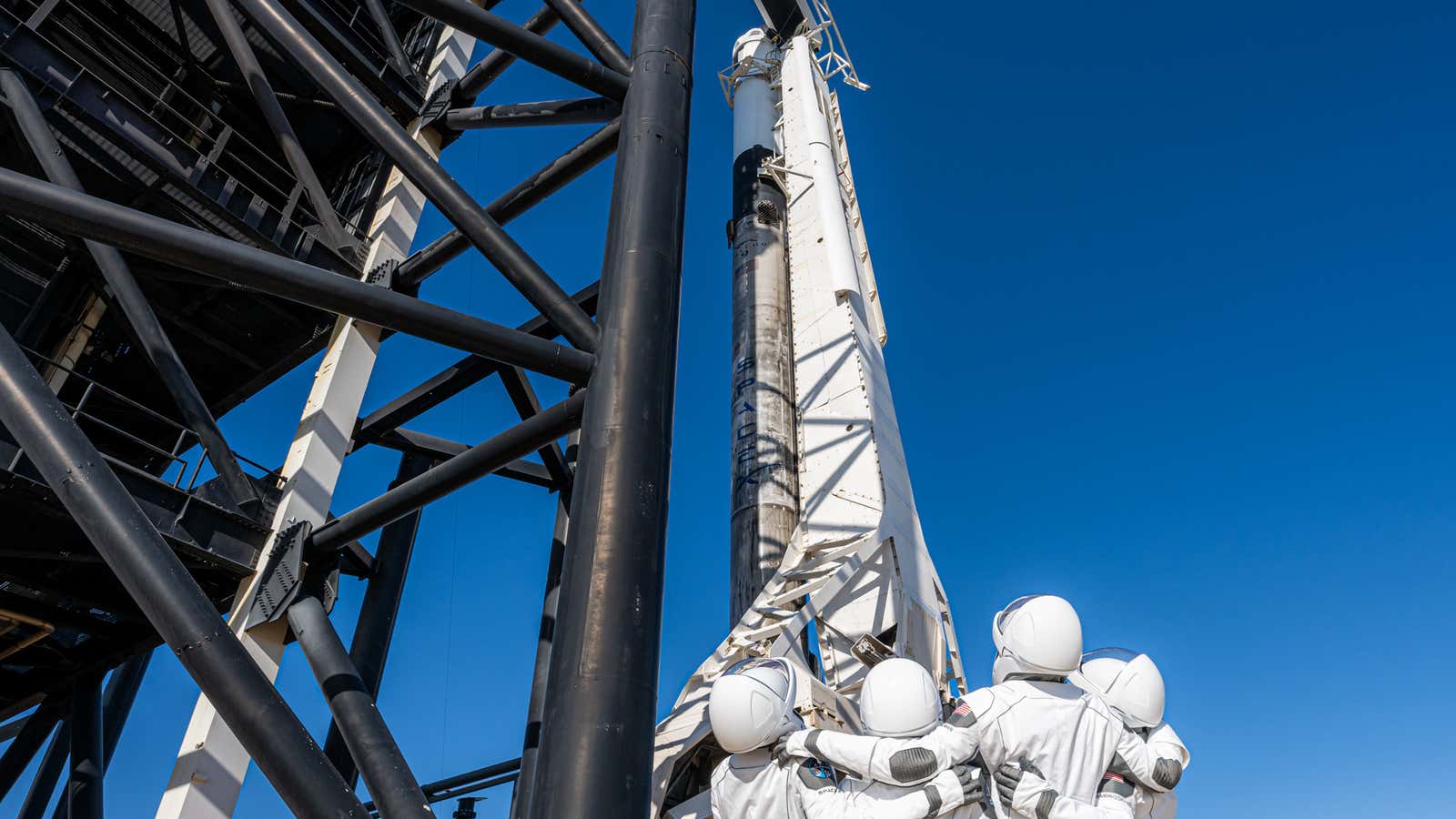One of Elon Musk’s repeat tricks is getting other people to pay when SpaceX tests innovative technology. To demonstrate the Falcon 9 rocket’s landing abilities, SpaceX simply strapped landing legs to rockets bought by NASA and other customers.
When it came to human spaceflight, NASA paid for the development of SpaceX’s crew Dragon. (The company invested some funds, but since neither it nor NASA will disclose how much, it is unlikely to be an impressive amount.) The US space agency also provided the test pilots: Experienced astronauts with backgrounds as flight test engineers.
As the company shifts its focus to Starship, the huge new rocket NASA wants to use to land astronauts on the Moon, there is more testing to do. Some of the components of future missions, particularly gear to communicate with astronauts and keep them alive, needs to be demo’d in a deep space environment. And true to form, Musk has found someone else to pay for it.
Jared Isaacman, the billionaire aerospace enthusiast who paid for the first tourist flight onboard SpaceX’s Dragon last year, is now paying for a series of missions, called Polaris, to demo new technologies for SpaceX. The first, Polaris Dawn, will take place no sooner than the fourth quarter of this year and will aim to do three things: fly higher than any previous Earth-orbiting mission, test out communications link with SpaceX’s Starlink network, and perform the first private spacewalk using brand-new space suits.
How much does being a SpaceX test pilot cost?
Isaacman politely declined to answer each time reporters asked him how much money he was paying for the chance to fly the mission, seemingly surprised to be asked, but it is, after all, the reason he gets to go. SpaceX charges NASA more than $50 million per seat on Dragon. Even if the company is only charging Isaacman its cost for each mission, SpaceX is likely to save hundreds of millions of dollars.
The crew Isaacman selected includes a former Air Force pilot who works for Isaacman’s companies, Scott Poteet, and two SpaceX engineers, Anna Menon and Sarah Gillis. They’ll be the first SpaceX employees to fly on the Dragon—and also a reminder that SpaceX could have easily crewed this mission itself, by throwing a rock inside their HQ and asking whoever it hits if they’d like to go.
For all the risk involved in spaceflight, the participants in this mission, just as with Inspiration4, won’t actually control the automated spacecraft in flight. In an emergency, they’ll push the automatic deorbit button. Their job is to be guinea pigs to make future passengers can survive. The most dangerous moments will be during the space walk, when the entire space capsule will be open to the vacuum of space.
Asked about this new paradigm for testing space hardware, Menon only said that SpaceX rigorously vets all its processes. But it’s a fascinating development in how we push technological frontiers. Menon’s husband is a NASA astronaut trainee, from the old tradition of the right stuff, a former NASA, SpaceX, and US Air Force flight surgeon. Menon is likely to beat her civil servant partner to orbit.
But don’t call it the privatization of space (no public goods are being put in private hands) or democratization (this isn’t a mass moment.) Instead, it’s the commodification of space: You couldn’t really pay to go to space five years ago. Now you can.
The moment harkens back to the days of Gilded Age tycoons commissioning expeditions to the north pole, or a bit later on, Howard Hughes designing and testing the aircraft his company built. Hughes, of course, wrecked his body and arguably his mind crashing those planes. Musk has learned: Let someone else take the thrill ride—and pay for it.
A version of this story appeared in Quartz’s Space Business newsletter.
